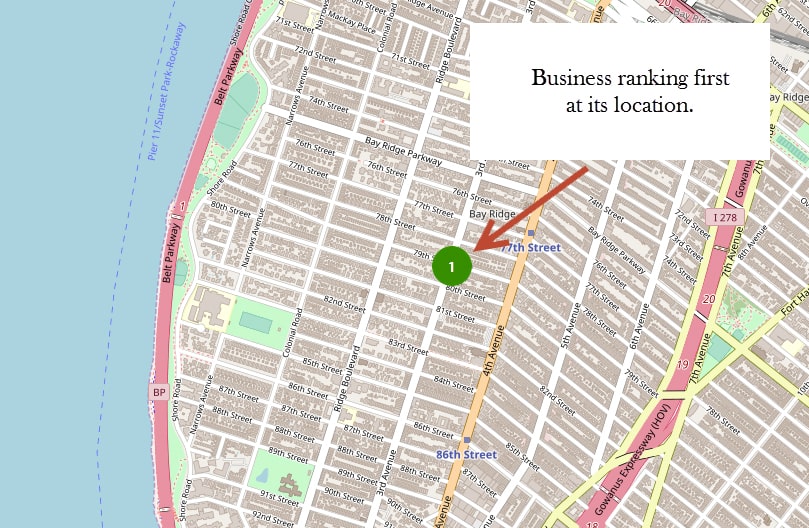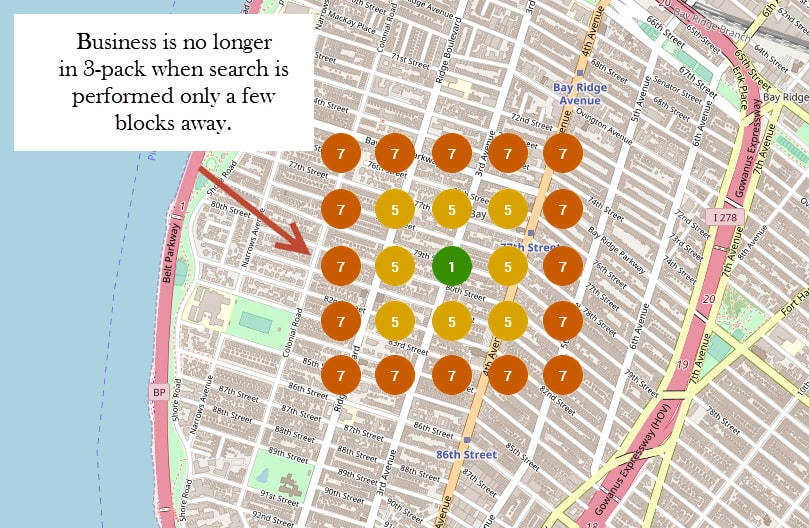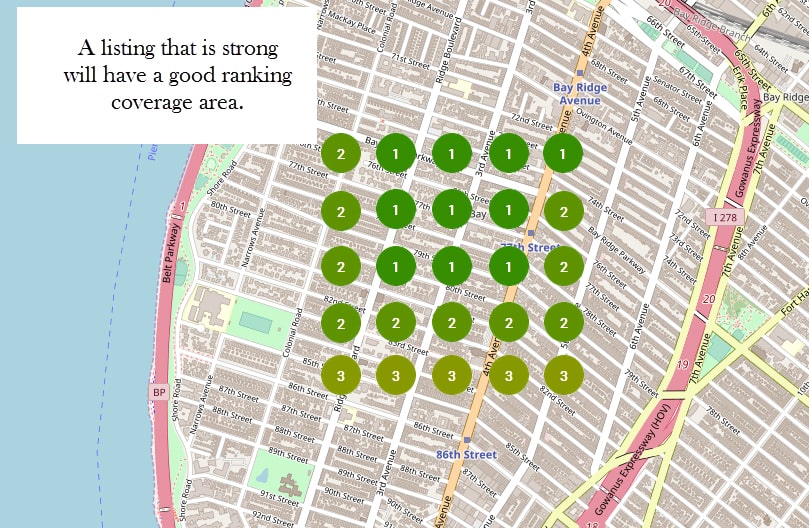This post will highlight a potential issue that you may be having with the map rank tracking of your local business that you may not be aware of.��The main problem stems from the setup of the rank tracker which makes you choose a specific location�(such as a zip code) to perform its search from. The zip code that gets chosen will inevitably be the one in which the business is located. The rank tracker will then give you the position in maps of the business for the chosen keyword.
However, relying on only one data point can give you a false impression of what is really going on. Below I will demonstrate a good reason why you need to be checking multiple points for your business and not just one zip code point for example.
Rank Tracking With One Data Point
There are lots different rank trackers out there, but there are really only two inputs when tracking local results. You need the keyword and the location you want to search from. Sometimes the tracker makes you input a zip code, sometimes you select a city or town name.
The results are usually drawn out as a line graph to give you an indication over time if the position of that keyword is improving or not.�
![]()
�
So what happens when that line graph hits the 1st spot?
Now we can move on to optimizing for another keyword phrase, right?
However, since results are highly dependent on proximity, you have�only achieved a 1st place position at one particular spot which is located right near the business. So if we were to visualize this on a map, it would look something like this:

Map Scan With Multiple Visual Data Points
So what happens when a search is performed from a bit further away than the actual business location (and do this lot's of times)?
Let's take a look at what scanning with Local Falcon gives us:

�
The business ranks first in Maps for the chosen keyword phrase at the location itself. However, go a few blocks in any direction and�the business not only does not rank first, but is not even in the 3-pack anymore!
That's actually a lot of 5th place rankings.�Don't you think a bit more optimization (or competitor Google listing removal) could be done on this particular keyword phrase to help the target business?
Although the information from the first rank tracker was actually correct for that one spot you checked��this visual representation of multiple location points paints a totally different picture altogether.
Unless you had setup your rank tracker to check the same keyword phrase from multiple locations, you would never have known that the coverage area of that number one ranking was actually quite small. That's because proximity to the location is one of the largest factors in Map rankings.
The further away from the business the searcher is, the lower the rank will be.�The goal here is to minimize the drop off of the ranking as the distance increases.
Just to compare, if the listing had more strength for a keyword, the map would look more like this:

What's great about Local Falcon, besides the visual ease in which it displays rankings from various locations, is that you can click on those location points and see the list of which businesses are outranking yours.�Give it a try with our free version.
Scanning multiple location positions to get more data to create a complete picture of the where your business is ranking can't be demonstrated better than the example above.
Local Rank Tracker Shows A Great Position But There Is No Traffic
Ever have a popular keyword ranking #1-3 in Google Maps (in the 3-pack), but for some reason is not delivering the traffic you would expect?
Keyword research indicates there are lots of searches.. the business listing is holding the number one position when checked with the rank tracker..sounds like a recipe to get lots of traffic �� but there are no clicks. Huh, whats' going on?
Assuming you have double checked the keyword phrase and it does have at least a minimum amount of searches, this could be your answer!
Look again at the case above. We know that a broad search term like 'injury lawyer' does get searches. But no clicks were being generated from the listing to the site. Why not?
The answer was�because the coverage area of that listing was actually very small!Unless you check multiple points, there would be no way to diagnose if that was the issue.
Go ahead, run some scans of your business, and let us know with a comment below what you find.
[If you find something interesting and want to want to write it up as an article, we would be happy to take a look at it and possibly post that here as well.]


